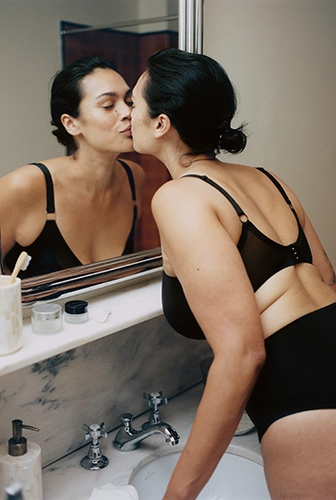
Get Ready
• Wear your best-fitting, non-padded bra to ensure your breasts are positioned naturally.
• Stand upright with relaxed shoulders to allow for accurate measurements.

• Wear your best-fitting, non-padded bra to ensure your breasts are positioned naturally.
• Stand upright with relaxed shoulders to allow for accurate measurements.

• Using a soft measuring tape, measure around your ribcage directly under your bust. Ensure the tape is snug and parallel to the ground.
• Round this measurement to the nearest whole number.
• If you are having trouble visit our FAQs below.

• Measure around the fullest part of your bust with the tape parallel to the ground—snug but not compressing or digging into your tissue.
• Round this measurement to the nearest whole number.
• If you are having trouble visit our FAQs below.

• Using the Slider bar below, enter your Band and Cup Measurements to reveal your size.
• Shop our favorites, or customize your preferences to enhance your fit.

Band
Cups
Underwire
Center front
Straps
Phone: 1-800-272-7078
Email: chantelle.care@groupechantelle.com